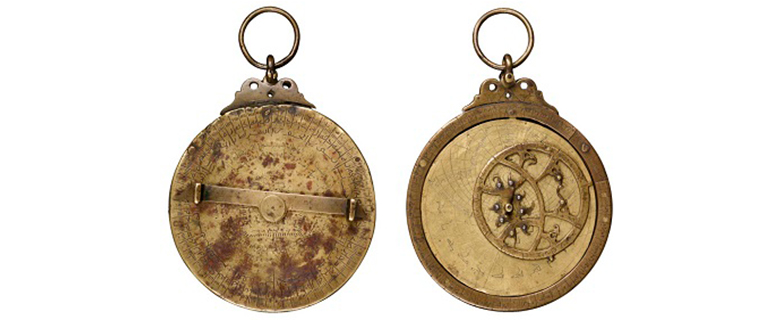
This brass astrolabe (Diameter 13 cm) was made in approximately the 13th century CE in the Andalusian city of Valencia, modern-day Spain. Astrolabes were, in essence, early computers, used to tell time, perform surveying, locate the direction of Mecca—in short, to determine one’s location in time and space. They used a series of interlocking brass plates, which, when aligned according to the engraved symbols, gave astronomical readings.
Astrolabes are thought to have first been invented by the ancient Greeks—the word comes from the Greek aster (star) and labin (to take)—but they were further developed in the Islamic world during the early Middle Ages. Astrolabes were used to determine prayer times and the qibla (direction for prayer). The oldest surviving astrolabe is indeed one of Islamic creation, dating back to the 10th century CE.
Medieval Andalusia was at the forefront of scientific thought and invention, with Islamic, Christian and Jewish scholars, scientists, writers and thinkers mingling in an unprecedented period of exchange. Valencia, home of this particular astrolabe, changed hands several times, including in 1094 CE when it was captured by the legendary El Cid. In 1238, King James I of Aragon entered the city and brought it under European control for good, though citizens of all religions were permitted to remain.
Learn More
Want to learn more about the way early explorers navigated their way to parts unknown using astrolabes and other tools? Check out Navigation Through the Ages, by Donald Launer, available in our Main Collection.
This astrolabe can fit in the palm of your hand—portability was the point, after all—but it radically changed the way humans traveled. For more inventions with outsized impacts, read Neil MacGregor’s A History of the World in 100 Objects.

Add new comment